1. History in Slave Trade
1.1. Slavery in Ancient Egypt
1.1.1. multiple forms of oppression
1.1.2. labour-intensive agriculture
1.1.3. existed for thousands of years
1.2. colonialism; slavery was violent and abusive
1.2.1. plantation of economy; enforced labour slaves to harvest produce
1.2.2. slaves were abducted from their home country and sold across the ocean
1.2.3. lucrative business
1.3. voluntary slavery
1.3.1. bonded labour
1.3.2. indentured servitude; allowed a contract with a defined amount of time in exchange for an entry to a country
1.4. racial discrimination; called individuals 'negros'
1.4.1. became a hereditary form of work
1.4.2. dehumanization; saw humans as cattle
1.4.2.1. racial, sexist etc.
1.5. video; Atlantic slave trade
1.5.1. largest faced migration in history
1.5.2. an enrage of 15% of slaves fit not make it across the ocean
1.5.3. diversity of slaves from Africa
2. Child Trafficking
2.1. Risk
2.1.1. undocumented children; migrants, risk of poverty and social exclusion
2.1.2. cost-reward assessment; risk aspects if rewards outlay the consequences
2.1.3. risk from state; migrants may be kicked out due to lack of legal status
2.1.4. absence of education, family separation, violence
2.2. Return migration
2.2.1. social and health care (holistic approach)
2.2.1.1. emotional support; psychological aids, reduce self-harm
2.3. invisible labour; hidden work environment i.e. household
2.4. marriage migration
2.4.1. voluntary; free will
2.4.2. involuntary; forced
2.5. trafficking destination
2.5.1. sex industry (mostly women, but some men)
2.5.2. forced marriage; women mostly
2.6. strain theory; unable to attain a goal, turn to illegitimate means to attain
2.6.1. voluntary choice
2.7. definitional difference
2.7.1. human trafficking; force & coercion, victim, involved in 'work'
2.7.2. human smuggling; cooperation, not necessarily the victim, no always 'working'
3. Forced Marriage
3.1. demand and supply
3.1.1. demand country; China
3.1.1.1. demographic explanation; one-child policy, sex-selective abortion
3.1.1.2. gender expectation; patriarchy
3.1.1.3. socio-economic explanation; female migration for jobs (rural to urban)
3.1.1.4. outsourcing brides from other countries
3.1.2. supply country; Vietname
3.1.2.1. demographic explanation; lots of women in rural areas
3.1.2.2. gender expectation; cultural expectation for women to marry
3.1.2.3. socio-economic explanation; poverty and unemployment
3.1.2.4. marriage migration from Vietnam to china
3.2. (Vietnam) perception of forced marriage
3.2.1. high earnings abroad
3.2.2. self-blaming (trafficked victims)
3.3. escaping forced marriage
3.3.1. running away, help from neighbours
3.3.2. help from authority
3.3.3. released
4. Bonded Labour
4.1. labour chains
4.1.1. 'hidden' migrant labour
4.1.2. not governmentally registered
4.1.3. informal labour contracts
4.1.3.1. recruitment; immediately available, low-cost
4.1.3.2. management; disconnection between labourers and social rights
4.1.3.3. triangular relationship; employers are separated from workers, workers are directly paid by the labour contractors
4.1.3.4. informal labour
4.1.4. developing countries
4.2. forced labour; production of consumer goods -- work imposed on individual
4.3. precarity; Neo-liberal globalization
4.3.1. uncertainty, instability, temporary work
4.4. global production networks; segmented labour market theory
5. Sex Trafficking
5.1. economy
5.1.1. feminization of poverty; disproportionately high in comparison to men
5.2. case study; Cambodia
5.2.1. sex workers forced into cloth making at a cheap price
5.3. law enforcement; take bribes and pay-offs
5.4. Definitional difference
5.4.1. human smuggling; cooperation, not necessarily the victim
5.4.2. human trafficking; force and coercion, victim, involved in 'work'
5.5. demand theory; as sex demand rises, so do incidence of sex traffickers
5.6. geography of target population
5.6.1. freelance sex work -- street, public settings
5.6.2. brothels -- sex is the only service provided
5.6.3. massage parlours, services more than sex
5.6.4. beer bars, karaoke bars, etc.
5.7. commercial sex in Southeast Asia
5.7.1. tourism as a key source of national revenue -- popularity of sex tourism
5.7.2. source of clients; transport workers, businessmen, tourists
5.8. problem downplayed:o Law enforcement refuse to recognize the problem of trafficking
5.8.1. Corruption; consent pay-offs to the police by corruption
6. Multi-level analysis
6.1. micro; individual factors
6.1.1. symbolic interactionism; make meaning of a symbol through daily interactions
6.1.2. deficit-based approach; victims experiences who need external support
6.2. macro
6.2.1. larger cultural, legal and political context
6.2.1.1. Refers to a structure and the structural forces.
6.2.1.2. Globalization and global capitalism, global politics.
6.3. meso
6.3.1. social institutions (school,family , community , government
6.3.1.1. organizational advocay
6.3.1.2. interdisciplinary coordination
6.3.1.3. cross-cultural and disciplinary competency
7. Economics
7.1. Neo-liberalism
7.1.1. incidence based; cost incurred over lifetime by those victimized
7.1.2. prevalence based; total cost of impact amongst all individuals
7.2. global economy; seeking 'surplus value'
7.2.1. cost competition among multi-national corporations
7.2.2. exploit labour to retain profit
7.2.3. Demand Theory; Higher demand, higher price; lower demand, lower price
7.3. case study; Thiland
7.3.1. Growing prosperity -- Fishing and seafood processing industry
7.3.2. Labor-intense and highly profitable
7.3.3. Recruiting migrants from neighboring countries to meet the labor demand
